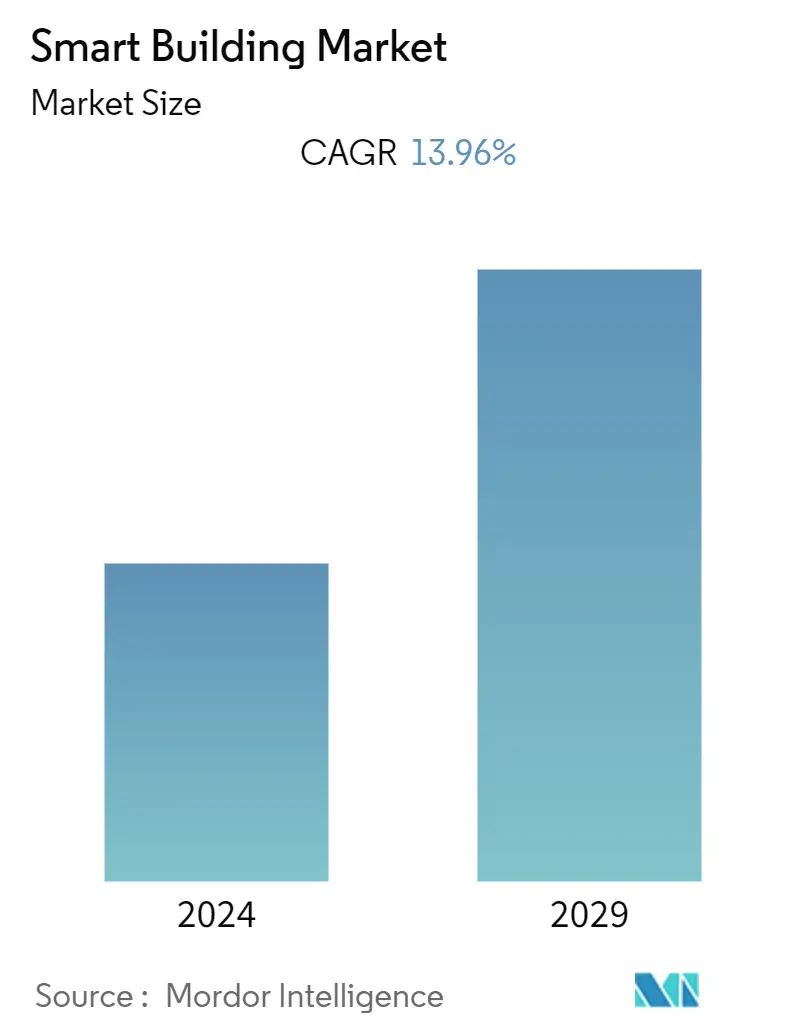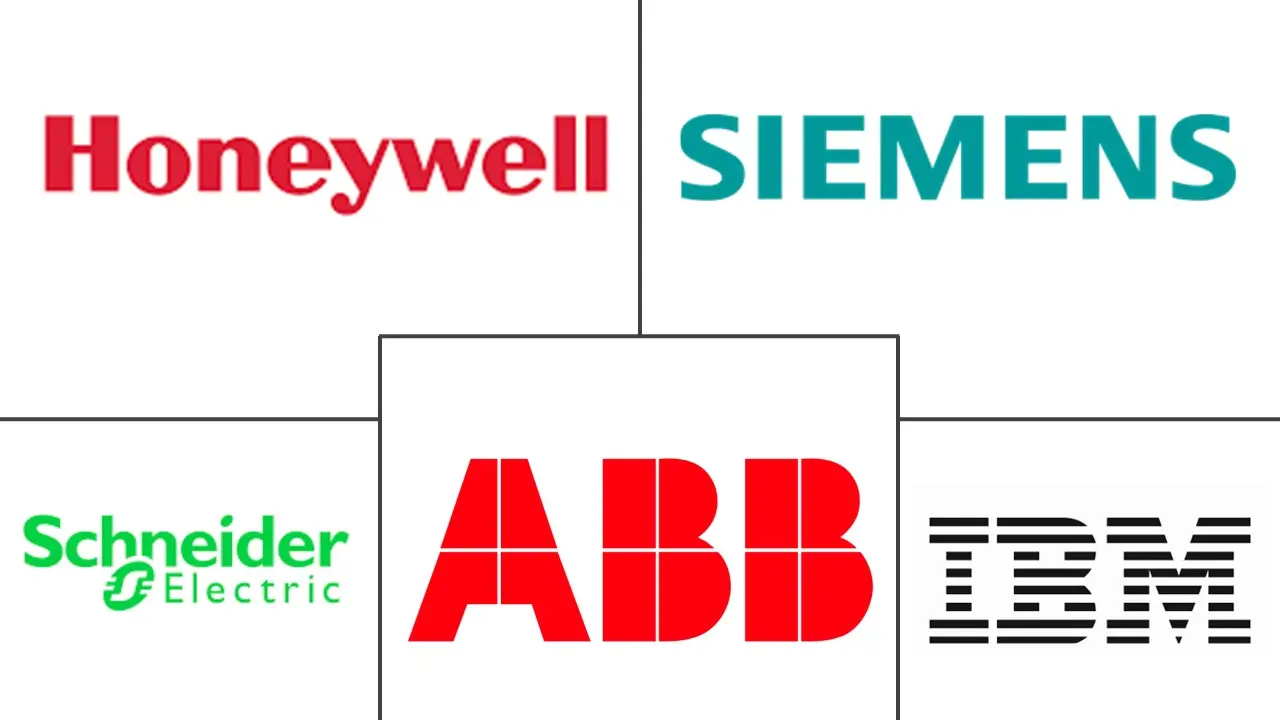Market Size of Smart Building Industry

| Study Period | 2019 - 2029 |
| Base Year For Estimation | 2023 |
| CAGR (2024 - 2029) | 13.96 % |
| Fastest Growing Market | Asia Pacific |
| Largest Market | North America |
| Market Concentration | Low |
Major Players
*Disclaimer: Major Players sorted in no particular order |
Need a report that reflects how COVID-19 has impacted this market and its growth?
Smart Building Market Analysis
The Smart Building Market is expected to register a CAGR of 13.96% during the forecast period.
The growing smart cities sector, rising demand for energy-efficient buildings, and developments by market players are expected to drive the demand for smart buildings.
- The concept of smart cities created considerable opportunities in the energy, waste, and infrastructure sectors with the Internet of Things. Smart homes, a significant trend in smart city concepts, have several advantages. Several smart city projects and initiatives are currently underway. Many smart city projects and initiatives are being implemented worldwide, driving global investment through urbanization. The OECD estimates that global investment in smart city initiatives may reach approximately USD 1.8 trillion between 2010 and 2030 across all metropolitan infrastructure projects.
- Rising concerns about the surge in energy consumption globally are anticipated to fuel more advanced and energy-efficient technologies. However, stringent governance on energy consumption and green building initiatives also augment the demand for energy-efficient technology across buildings. This factor is expected to propel the implementation of smart building solutions globally.
- Therefore, businesses in any industry can adopt IoT devices, comprising smart thermostats and lighting systems, to minimize their electrical consumption and make buildings more sustainable. Since the adoption of IoT-enabled building management systems is increasing rapidly, it is creating awareness about space utilization industry standards and efficient energy usage.
- In addition to this, the demand is pushing energy services and technology companies to integrate their solutions and develop advanced mechanisms that can help consumers address challenges such as high energy bills and the removal of manual processes in doing so. The rapid pace of technological innovation presents exciting opportunities to enhance people's lives and promote sustainability. This furthermore provides lucrative opportunities for players to expand their position in the market with strategic developments.
- However, the market's growth is expected to be hampered by a shortage of competent professionals skilled in evaluating smart solution systems. Professionals in this field must be aware of design modifications and installations for future needs.
- The office reopening post-COVID-19 was projected to increase the smart technology demand for safe surroundings. Facility managers and tenant companies of commercial buildings needed to provide a secure office environment post-lockdown. Therefore, smart technology could manage regular cleaning and disinfection, proper ventilation of offices, smart access controls, temperature measurement devices, and optimization of spaces to maintain physical distancing. These factors are anticipated to increase the demand for smart building solutions.

